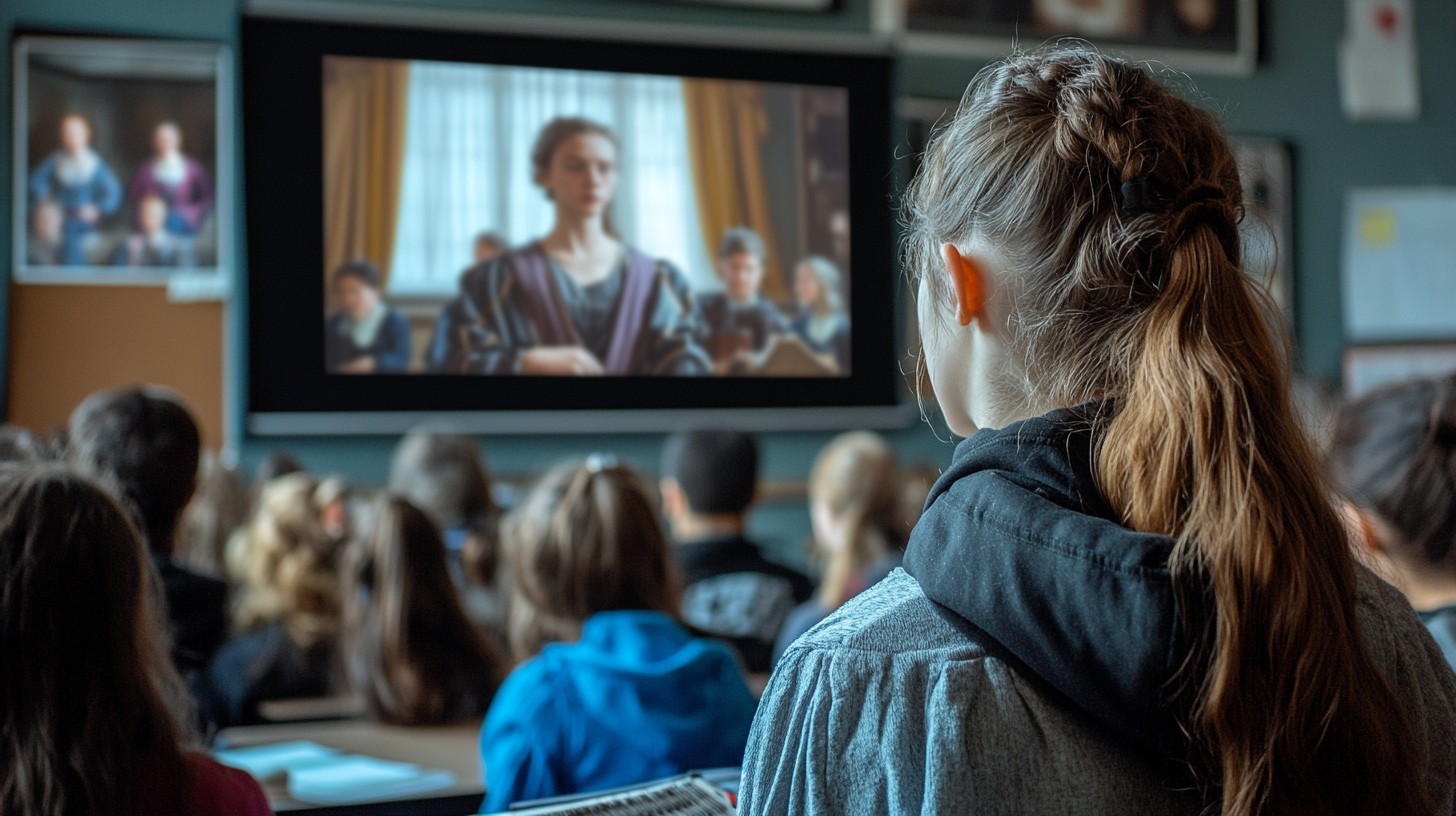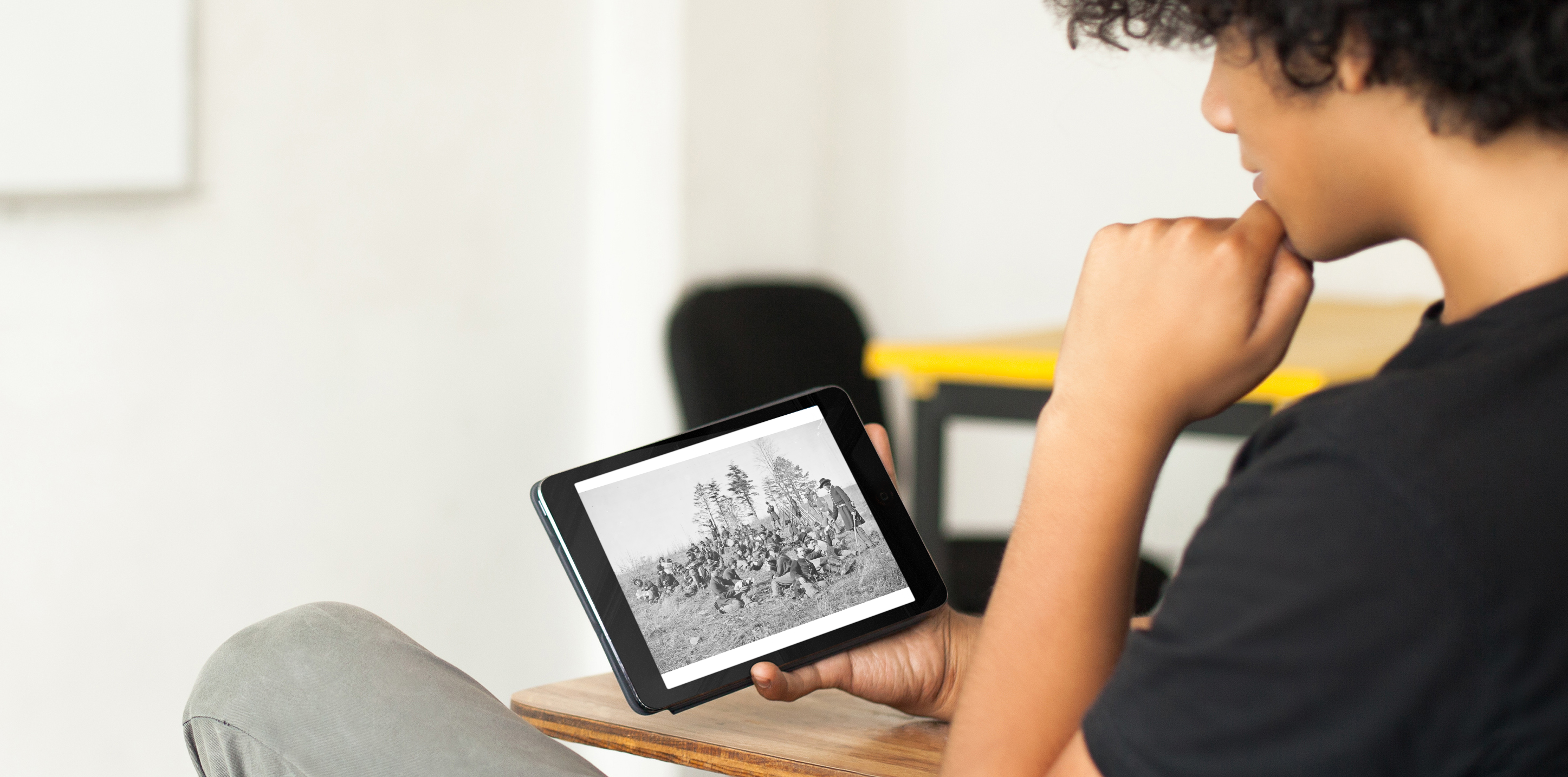
When I was a student, watching movies was often reserved for teacher absences, commemorations, or rewards. When we saw that TV cart roll into the classroom, the response was always the same: pure excitement from me and my classmates! As a teacher, I saw my students have the same response whenever I brought a movie to watch as part of the lesson. Pure excitement!
So, why not leverage this student engagement tool more in the social studies classroom? The truth is every year films are made that add to the huge repository of movies that could be used to enhance instruction in the social studies classroom and incorporating these diverse and engaging strategies is crucial for fostering a deeper understanding of historical events.
One powerful tool that educators can leverage in the social studies classroom is the use of historical fiction and non-fiction movies. This blog explores the definitions of historical fiction and non-fiction movies, strategies for their effective integration into social studies lessons, research supporting their use in education, and the connection between movies and student engagement.
Defining Historical Fiction and Non-Fiction Movies
Historical fiction movies are cinematic works that couch fictional narratives within the backdrop of historical events or settings. These films often blend real historical elements with fictional characters and storylines to provide a captivating narrative. For example, the movie Gladiator is considered a historical fiction movie. On the other hand, historical nonfiction consists of true accounts of historical eras and events. Non-fiction movies are documentaries or fact-based films that present historical events using real footage, interviews, and archival material. For Example, Schindler’s List.
Why Historical Fiction & Non-Fiction Movies?
Let’s begin by exploring why historical fiction and non-fiction movies resonate with students and educators alike. Here are just a few reasons:
Visual Engagement
Movies capture attention through dynamic visuals, making historical events or abstract concepts more accessible and memorable. Thus, improving comprehension and retention for diverse learners via multisensory learning.
Real-World Context
Movies can provide authentic and diverse perspectives, showcasing real people, places, and events that textbooks alone cannot convey. Movies can also draw parallels between historical events and contemporary issues, helping students recognize the relevance and continuity of historical themes.
Critical Analysis Skills
Movies often incorporate primary sources (either directly or indirectly), allowing students to engage directly with historical artifacts, documents, and eyewitness accounts and perspectives. This exposure to primary sources enhances critical thinking skills. Further, critical thinking happens when strategies are used that allow students to analyze the information presented in the movies, assess the credibility of sources, evaluate biases, and discern between information and interpretation.

Best Practices
Movies can serve as an alternative or even a scaffold to the information provided by the textbook. They provide vivid depictions that help students visualize historical events beyond what textbooks can offer. However, it’s important to remember that to successfully address learning objectives, students must do more than simply watch the movie and never use the information again.
Curate Relevant Content
Select movies that align with the standard and/or curriculum to reinforce key concepts, learning objectives, and/or skills. Incorporate movies that represent diverse cultures, viewpoints, and experiences to foster inclusivity and global awareness. It’s ok to ask your students for suggestions! You should always watch and vet the movie prior to showing students as best practice.
Interactive Viewing Experience
Prior to viewing the movie pose questions or provide context before showing the video to activate prior knowledge and set the stage for learning. While viewing the movie encourages active engagement from students by pausing for discussions, reflections, or quick polls to check understanding. After viewing the movie, the teacher can facilitate discussions, assignments, or projects that allow students to synthesize information, analyze perspectives, make connections to broader themes, and practice/ apply social studies specific skills.
Strategies
Myth Busters
As a United States history teacher whose educational philosophy was and still is centered around engagement, I remember struggling to find exciting ways to teach the skill of corroboration. Using movies made this easier for me. In a “Myth Busters” lessons students would watch movies such as Forrest Gump or National Treasure to determine if the historical information presented by the movie were factual.
To do this, students had to find 2-3 sources that corroborated historical facts from the movie. If it could not be corroborated, students had to rewrite that portion of the movie script to make it historically accurate. Not only were students engaged, but the level of critical thinking and analysis that the lesson provided was phenomenal! Students mastered the skill of corroboration and had fun while doing it.
Hidden Figures
This strategy encourages students to uncover the untold stories of history by focusing on a supporting character in a movie who may not be the central figure. Students research the character’s real-life contributions, their historical significance, and why their story might have been overlooked or minimized in the film. This approach promotes critical thinking by challenging students to question whose voices are amplified in history and media and why. It also fosters engagement by allowing students to connect personally with lesser-known figures, inspiring curiosity and a deeper understanding of history’s complexities. Through this lens, students learn to appreciate the diverse and often unsung contributions that shape our world.
Flipping the Script
Students are tasked with rewriting key scenes from the antagonist’s perspective, exploring their motivations, beliefs, and justifications. This strategy fosters critical thinking by encouraging students to analyze historical events or conflicts from multiple viewpoints, deepening their understanding of complex issues. By stepping into the antagonist’s shoes, students develop empathy and learn to assess how biases, circumstances, and cultural contexts shape actions and decisions. This creative activity keeps students engaged while honing their ability to evaluate diverse perspectives in history. However, it’s important to avoid using this strategy in a way that requires students to justify or defend acts of oppression, such as rewriting a movie script from the perspective of a slave owner.
Reel-Time Cause and Effect
Students create an annotated timeline while watching a movie, noting key events and their immediate and long-term impacts. This strategy fosters critical thinking by encouraging students to analyze how individual decisions and actions shape larger historical outcomes. It promotes engagement by actively involving students in mapping connections as they watch, helping them see the interplay of events and their consequences in a dynamic, visual way. This activity bridges storytelling and historical analysis, making complex concepts more accessible and memorable.
Movies offer immersive experiences that captivate students’ attention and engage them emotionally, making historical events more relatable and memorable. When used strategically, films provide a powerful tool for teaching complex and controversial topics, helping to scaffold difficult concepts in a way that feels more accessible. By presenting diverse perspectives and exploring historical themes, movies deepen students’ understanding and critical thinking skills. They serve as a valuable supplement to traditional textbooks, allowing educators to create a dynamic and engaging curriculum. Through historical fiction and non-fiction films, teachers can foster a deeper connection to the content and create a learning environment where students feel more invested in history.
Get hundreds of digital video-based activities right at your fingertips with Active Classroom
Try a free 30-day trial today
Regina Wallace resides in Atlanta, Georgia where she most recently served as a district K-12 Social Studies Coordinator. In this role Ms. Wallace developed the district’s Civic Engagement, Financial Literacy, and Diversity Awareness programs while increasing student outcomes on state assessments. Ms. Wallace was recognized by the Georgia Council of Economic Education and state Superintendent Richard Woods with an award for Innovation in Financial Education. She was also recognized by Michelle Obama’s When We All Vote organization for her work with student civic engagement during the 2020 elections. These are issues that she is most passionate about. Engagement begets engagement is the educational philosophy in which she lives by. She now serves as a District Partnerships & Instruction Coordinator for Social Studies School Service.
